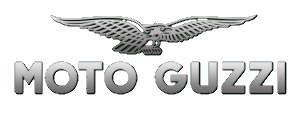

Motocarro Tipo 107
Based on the Moto Guzzi Sport, the Tipo 107 of 1928 had a rear end consisting of a trianglated chassis with an axle and two wheels suspended by leaf springs. It was available with cargo box (as illustrated) or tray. and was easy to handle even for a relative novice to motorcycling.
Motocarro Sport 14
When the Moto Guzzi Sport 14 arrived on the market in 1929, the transport tricycle version was immediately created. Probably nothing was changed apart from the price and the structure of the rear section. The Sport 14 was not designed from scratch, but as an evolution of the previous Sport model (from 1923). The same happened for the homonymous three-wheeler.
Mototriciclo 32 and Motocarro 109-32
Prototipo P 250
When the P 250 began to be sold, Moto Guzzi also created a tricycle based on this model, again with a 232 cc engine. Technically there was no difference with the other models. The front came from the P 250, the rear was equipped with a box suspended on leaf springs. The P 250 could also be supplied with a cab for the driver, with a canvas roof. Alternatively, there could be a windscreen, canvas cover and leg guards. However, although the studies had continued throughout 1935, this prototype never resulted in actual production.
Motocarro S
In 1934 the Moto Guzzi S-series appeared, with the overhead valve engine of the Sport 15 and the four-speed gearbox of the V-series. Consequently, it seemed logical to equip the new transport vehicle with the same combination. Since the engine had strong similarities with the S Series motorcycles, the transport vehicle was also called "Motocarro S". However, the structure had been modernized: the rear axle was equipped with a differential, it was possible to choose between a four-speed gearbox and one with three forward gears plus reverse. The load capacity grew to 800 kg. The rear axle was fitted with automotive-type rims.
ER
In 1938 the motocarro was equipped with the overhead valve engine of the Moto Guzzi Series V. It had three forward gears and one reverse; drum brakes on all wheels. The payload increased significantly - 1000 kg. The chassis alone cost 9,800 lire, the three-wheeler complete with body came to 10,400 lire.
TriAlce
The TriAlce is a three-wheeler built between 1940 and 1943 for the armed forces.
Based on the Alce, 1741 of these were built between 1940 and 1943.
It was extensively used by the Italian army during Second World War on all fronts in three versions Monoposto (single-place), Biposto (two-place) and Attrezzata (sidecar combination).
Tipo U
The 1942 Type U was an improved version of the ER.
Edile
Although the Carromotore Edile, put on sale in 1946 together with the Ercole, resembled a normal three-wheeler with a built-in cab, the structure was completely different. The frame consisted of a large central beam which connected the headset to the rear axle. The motorcycle setting was almost completely abandoned. The driver sat on the right side of the cab, the engine (the usual single-cylinder 500 cc) was in the center, together with the five-speed Ercole gearbox with reverse. The steering was governed by a very heavy steering wheel, which operated on a simple wishbone. Even the front wheel had become automotive-type. A spare wheel was housed in the cabin. The Aedile had no suspension, no doors to the cab. The transmission ratio was very short, allowing a payload of 3.6 t, but a maximum speed of just 25 km/h. The idea was to have a motor vehicle capable of replacing animal-drawn carts. However, the Edile had little success, and was shelved as early as 1947.
Aiace
In 1962 the Aiace appeared as an economic means of transport for urban logistics. It was equipped with the small two-stroke engine of the Moto Guzzi Zigolo 110. It had a cab without doors, and the engine was mounted behind it. Consequently, traction was implemented directly through a three-speed gearbox which integrated the differential. It also had a reverse gear. Steering was controlled by a steering wheel, and the front wheel was served by an oscillating fork. For the rear axle there were hydraulic shock absorbers. Without the cabin and body, the Aiace cost 164,000 lire; complete it reached 243,000 lire. It was not commercially successful, and production ceased in 1963. But it would have two successors in the 50 cc capacity: the Dingotre and the Furghino.
Dingotre
The Dingotre appeared in 1965, and like the Aiace it was designed for light transport. Unlike its predecessor, however, it had a major advantage: due to the regulations of the time, a motorcycle of up to 50 cc could be used by anyone over the age of 14, without a license plate and without a licence. The engine (derived from the Dingo moped) was placed under the driver's seat. Forced air cooling had to be applied. The Dingotre had no cabin, but two large leg guards, which frontally made it look like a large scooter. The frame consisted of a wide tube. There was a large brake pedal, but the gearbox (with three gears) was of the wire type (twistgrip), operated with the left hand, together with the clutch, as on many scooters of the time. The front wheel was suspended with a telescopic fork, while the rear axle had two small leaf springs. Since it was a light transport vehicle, the transmission was with a simple chain. There was no reverse gear. The Dingotre was produced until 1968, when it gave way to the Furghino. The Dingotre cost 151,000 lire as a chassis alone, and 210,500 lire complete.
Source: it.wikipedia.org/wiki/Motocarri_Moto_Guzzi